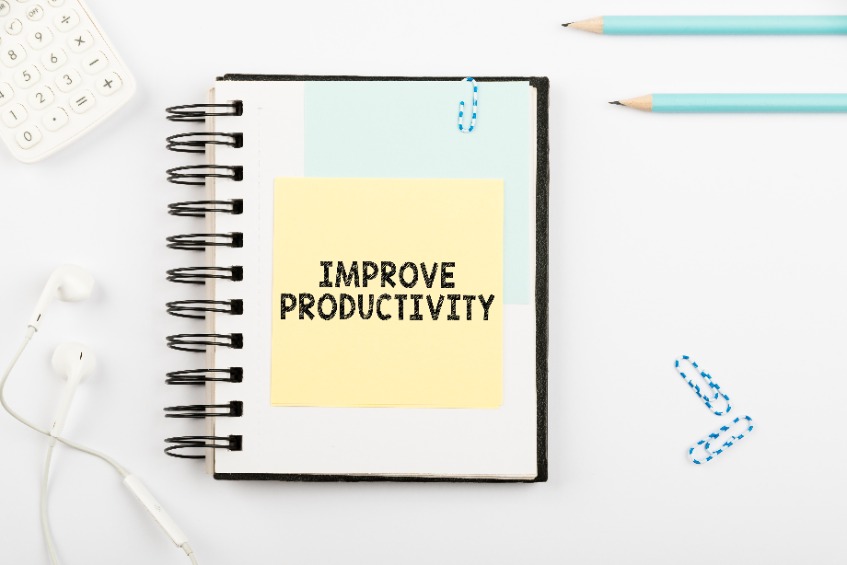
The last quarter can feel like a race to the finish line. The need to plan for next year while balancing family commitments and holiday events compounds the stress of reaching annual goals. In fact, 88 percent of Americans feel the end of the year is the most stressful time of year. One of the best ways to combat end-of-year stress is to take active steps to increase personal productivity to get into the “flow state,” or the feeling of being so in the zone that all distractions fall away and tasks at hand receive your full and energized attention.
What Is “Flow State?”
The Hungarian-American psychologist Mihaly Robert Csikszentmihalyi introduced the term “flow” in 1975 in his book “Flow: The Psychology of Optimal Experience.” Csikszentmihalyi describes the state of flow as “being completely involved in an activity for its own sake.” When someone is in a state of flow, the ego falls away, time flies and every action, movement and thought flows inevitably and naturally from the previous one. “Your whole being is involved, and you’re using your skills to the utmost,” he says.
According to the American Psychological Association (APA) definition, flow involves a feeling of effortlessness that results in pleasure. In a state of flow, we accomplish tasks quicker and with better results. Even better, flow leaves the doer with an “after-glow” effect from neurotransmitters like dopamine and serotonin, which lower cortisol levels, thereby reducing stress.
Six Tips for Achieving Flow State

Since Csikszentmihalyi’s introduction, many psychologists and social scientists have further researched the subject of flow. Largely led by authors and performance experts Steven Kotler and Jamie Wheal, there are now 22 identified triggers that can induce a flow state.
Like any skill, entering a flow state takes practice. Here are six tips to help you achieve flow on a regular basis and improve personal and professional productivity.
- Set well-defined goals. Knowing what you hope to achieve is essential to carving a path to success. The more clearly defined the end goal is, the more obvious that path becomes. Whether leveraging known processes or developing innovative solutions, spend the time needed to define and document goals, and share that information with your team to ensure alignment and accountability.
- Seek clear and immediate feedback. Feedback elicits new perspectives and insights from objective and expert points of view. Make feedback a constant part of the work process. Encourage colleagues to collaborate and schedule consistent check-ins with higher-ups and subject matter experts. The more immediate the feedback, the quicker you can pivot to make changes without disrupting flow state.
- Focus. “Flow follows focus,” Kotler says. “The state can only arise when all of our attention is directed at the present moment.” Paradoxically, focus takes focus. It’s important to take stock of your environment, body and daily rhythms to create stimuli for focus. Make efforts to remove distractions from your workspace and create a schedule that allows for flow time. Take care of yourself: eat well, exercise and get a good night’s rest to improve concentration. It’s scientifically proven that everyone is wired with different internal clocks. Discover what time of day you feel most awake and designate that time for focused work.
- Stoke passion and purpose. When we have passion, interest and curiosity come naturally. Kotler encourages specific passion. “Don’t just be interested in football or food,” Kotler says. “Be curious about the pass-blocking mechanics required to play left tackle; or the potential for grasshoppers to become a primary human food source in the next 10 years.” Purpose is the step beyond passion. It means understanding how our actions contribute to a larger goal, outside of individual desire. When individuals are passionate and understand how a task contributes to the bigger picture with a grander purpose, they are rewarded by the activity itself. That positive internal feedback loop stimulates flow.
- Balance challenge and skills. According to Kotler, a challenge-skill ratio means “the challenge of the task at hand stretches our skills to the utmost.” Flow is best achieved when tackling a task that demands all our skills and pushes us just beyond our comfort zone. This helps individuals to focus and learn through doing. Be careful not to overextend. This disrupts flow with too many roadblocks, questions or corrections. Researchers suggest that a four percent difference between challenge and skills is optimal for producing flow.
- Establish autonomy. There is an increased desire for autonomy in today’s workplace. Autonomy gives employees the freedom to tackle tasks in a way that complements their flow naturally. Businesses might be reluctant to give abundant employee autonomy, thinking employees might be less productive. The opposite is true, however. When employees have autonomy, they feel trusted by leadership to make their own decisions. This increases engagement, creativity, accountability and motivation. Consider that Google has a “20 Percent Rule” where engineers spend approximately a fifth of their time on projects they’ve come up with themselves. More than half of Google’s most profitable products, including Gmail, AdSense, Google Maps and Google News, came from these autonomous, employee-led projects.
Performance Is More than Productivity

Sometimes, especially in business, it’s easy to become weighed down by numbers, deadlines and an endless to-do list. Remember, productivity isn’t the only measure of performance. Flow accounts for this. By focusing on flow first, productivity is the natural result of better clarity, an improved mood and reduced stress. When we continuously strive for flow, the result goes beyond work productivity. Flow creates a work-life balance that has dramatic benefits for the individual and organization alike.
